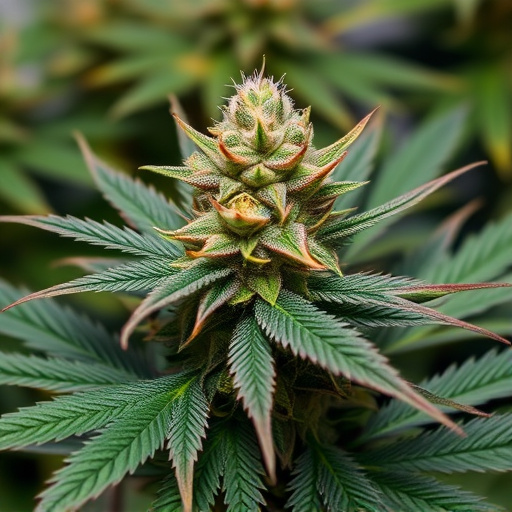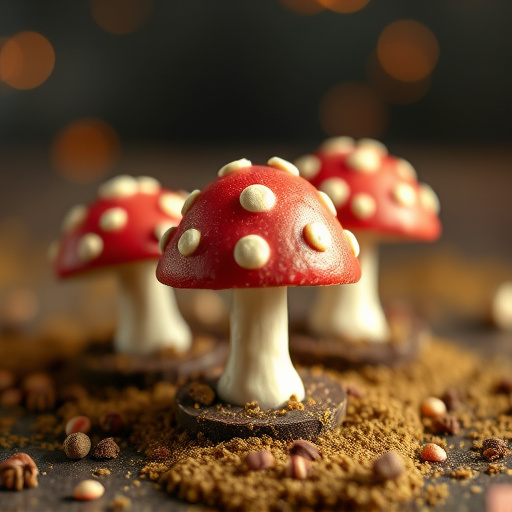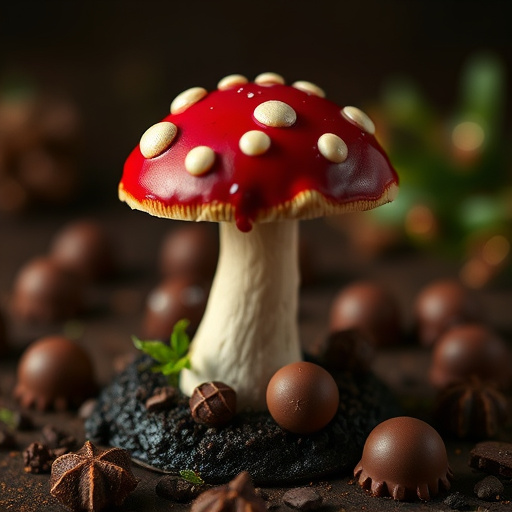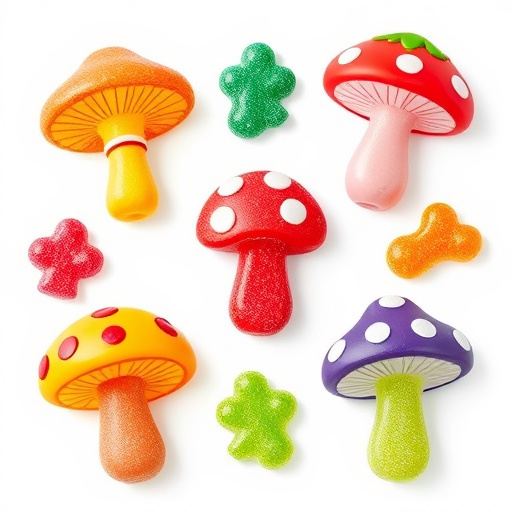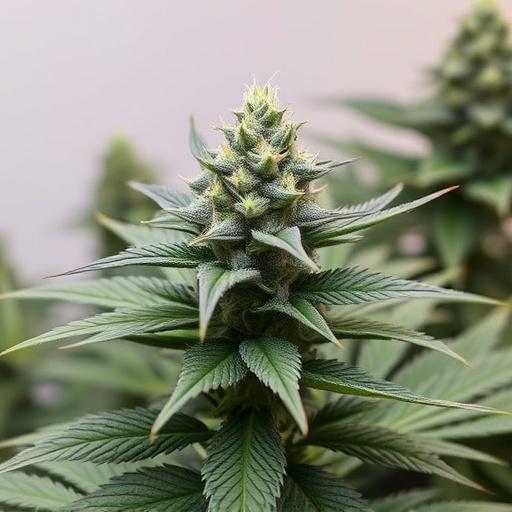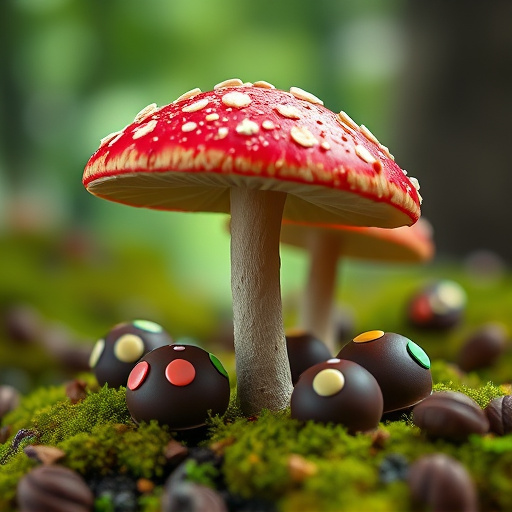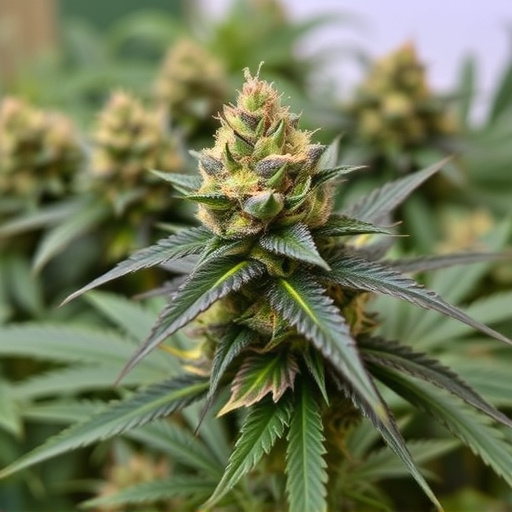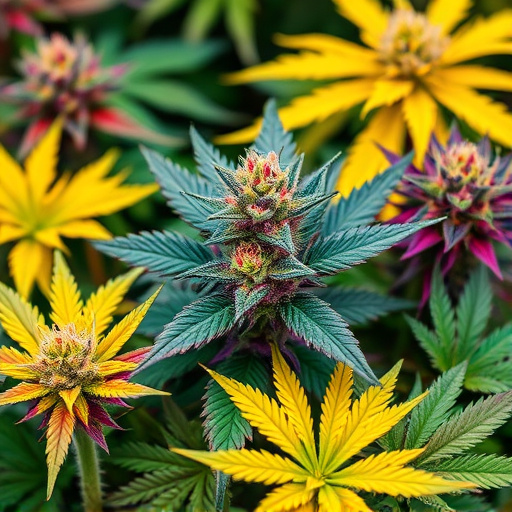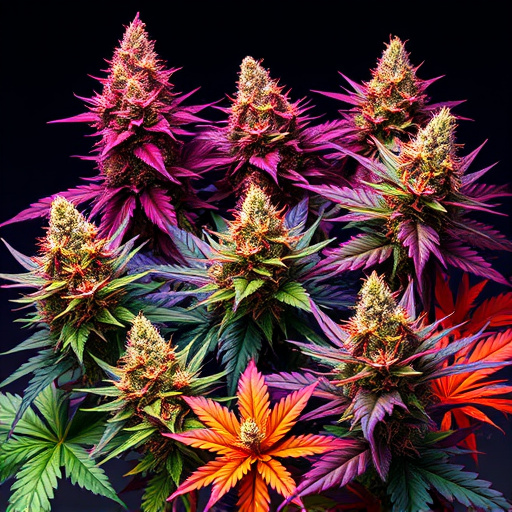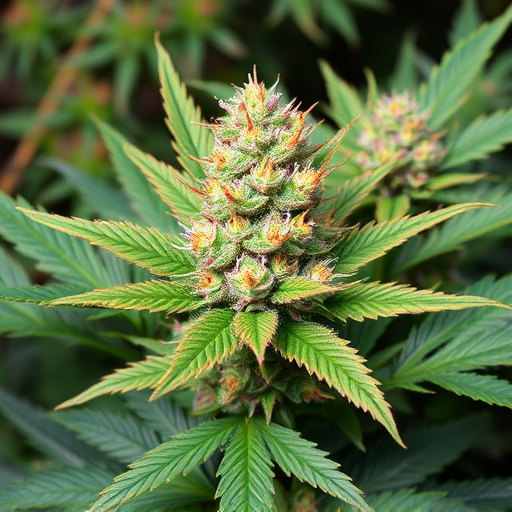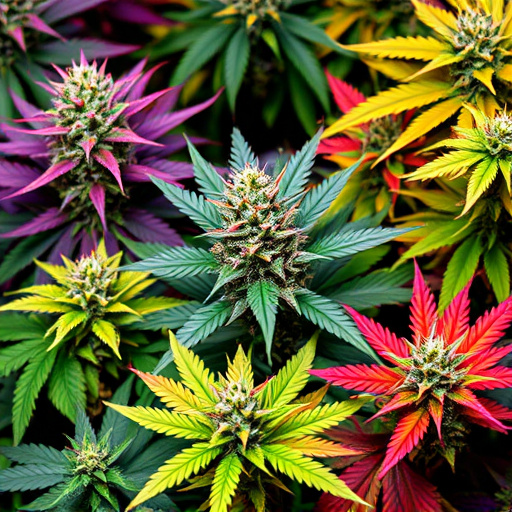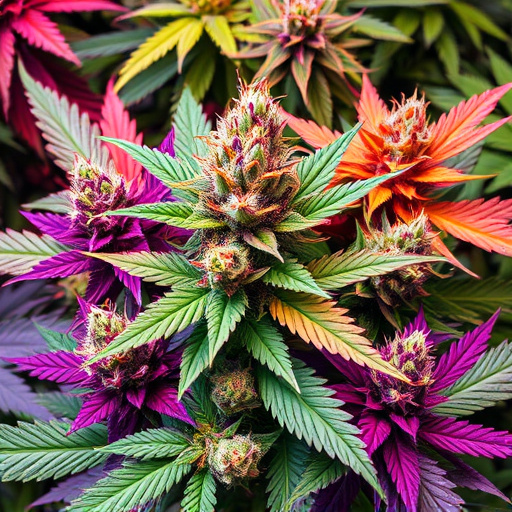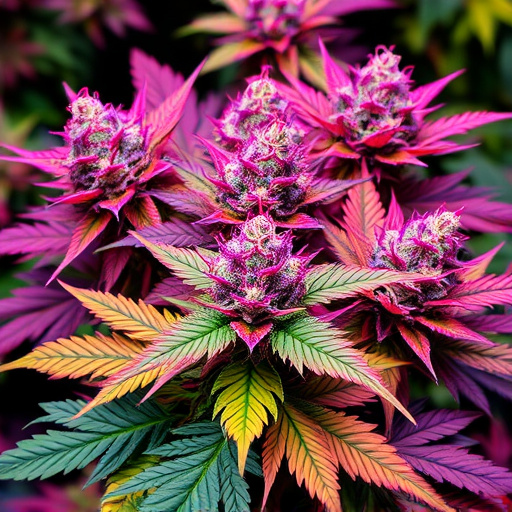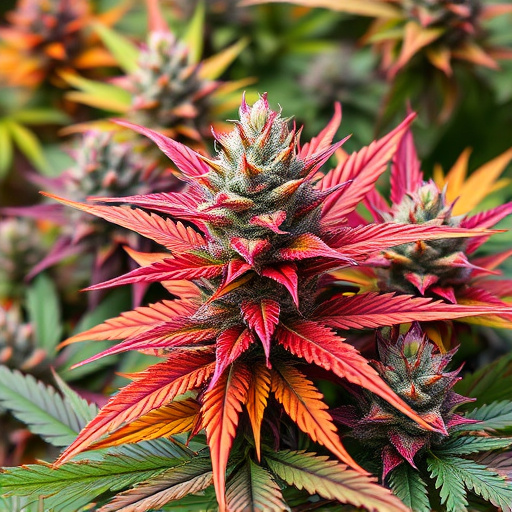The unique effects of cannabis flower are driven by its complex mix of cannabinoids (like THC and CBD) and terpenes, which influence aroma, flavor, and therapeutic benefits across various colorful marijuana strains. While CBD-rich strains offer calmness without psychoactive effects, THC-rich varieties induce euphoria and creativity. Terpenes like myrcene and limonene further customize these experiences. Informed consumption is crucial to balance cannabis's therapeutic potential—for conditions like chronic pain, anxiety, and sleep disorders—with risks like respiratory issues and cognitive impacts, especially for young minds.
“Unraveling the effects of cannabis flower, we explore its intricate chemical composition and how it translates into a diverse range of experiences. From the vibrant and varied colorful marijuana strains to their potential benefits and risks, this comprehensive guide delves into the science behind each bloom.
Discover how different cannabinoid profiles create unique effects, offering insights for both curious minds and seasoned users. Understand the impact of these powerful plants on the body and mind, with a focus on the captivating world of colorful marijuana strains.”
- The Chemical Composition of Cannabis Flower and Its Impact
- Varied Effects Across Colorful Marijuana Strains
- Potential Benefits and Risks: A Comprehensive Look
The Chemical Composition of Cannabis Flower and Its Impact
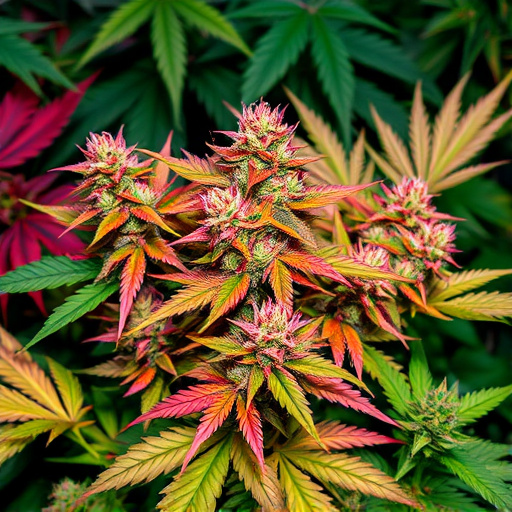
The chemical composition of cannabis flower, often referred to as the plant’s unique blend of terpenes and cannabinoids, plays a pivotal role in its diverse effects on the human body and mind. Cannabinoids like THC (Tetrahydrocannabinol) and CBD (Cannabidiol) are the most well-known components, with THC primarily responsible for the plant’s psychoactive properties, inducing feelings of euphoria and altered perception. In contrast, CBD doesn’t produce a high but offers potential therapeutic benefits, including reducing anxiety and inflammation.
The variety of colorful marijuana strains available today is a testament to the intricate interplay of these chemicals. Different strains, each with its distinct terpene profile, can evoke varying emotional and physical responses. Terpenes, aromatic compounds that give cannabis its unique scents, also contribute to the overall experience. For instance, myrcene, known for its earthy aroma, is commonly found in indica strains and is associated with relaxing effects, while limonene, with its citrusy notes, is linked to uplifting and energizing sensations, making it a prevalent terpene in sativa varieties.
Varied Effects Across Colorful Marijuana Strains
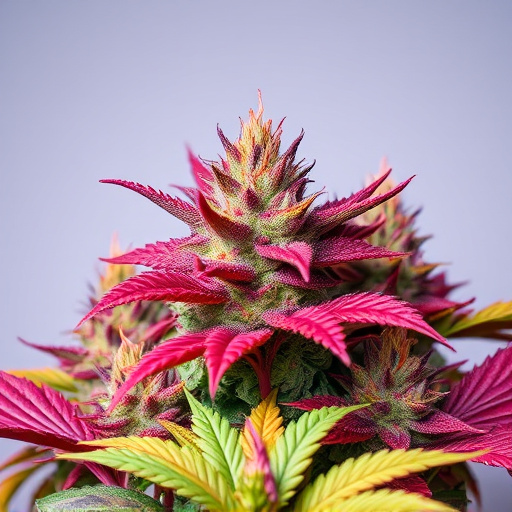
The effects of cannabis flower can vary dramatically depending on the specific colorful marijuana strains in question. Each strain possesses a unique combination of cannabinoids and terpenes, which are responsible for the plant’s distinct aroma, flavor, and therapeutic properties. For example, strains with higher levels of THC (tetrahydrocannabinol), one of the primary psychoactive compounds, tend to induce more intense euphoria, relaxation, and creative inspiration. In contrast, CBD (cannabidiol)-rich varieties are known for their calming effects without the mental impairment, making them popular for managing anxiety, sleep disorders, and chronic pain.
Moreover, the vibrant colors in colorful marijuana strains often correlate with specific terpenes that contribute to their visual appeal. Myrcene, for instance, is linked to earthy and musky scents, while limonene offers a bright, citrusy aroma. These terpenes can influence the overall experience, enhancing or modifying the effects of cannabinoids. Thus, exploring different colorful marijuana strains allows users to tailor their intake to desired outcomes, whether seeking relief from stress, enhanced creativity, or simply a pleasant sensory journey.
Potential Benefits and Risks: A Comprehensive Look
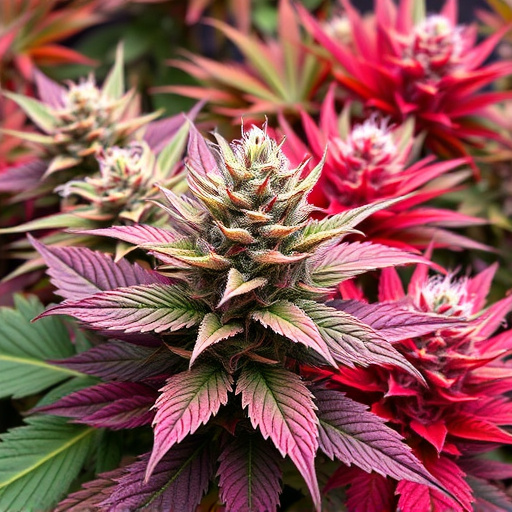
The potential benefits and risks of cannabis flower are vast and multifaceted, as research continues to uncover its therapeutic properties while also highlighting certain dangers. On the positive side, cannabis has shown promise in alleviating symptoms associated with various medical conditions, such as chronic pain, anxiety, and sleep disorders. Certain colorful marijuana strains, known for their high concentrations of cannabidiol (CBD) or tetrahydrocannabinol (THC), have been particularly studied for these effects. For instance, CBD-rich strains may offer anti-inflammatory and anxiolytic properties without the psychoactive effects of THC, making them suitable for individuals seeking relief from pain and stress.
However, it’s crucial to balance these potential benefits with the known risks. Regular cannabis use can lead to respiratory issues due to the inhalation of smoke, particularly in those who are susceptible to lung conditions. Additionally, there are concerns about cognitive impacts, especially on developing brains, as well as the potential for dependency and mental health exacerbation in vulnerable individuals. The varying potencies and chemical profiles of different colorful marijuana strains necessitate informed consumption, with users considering their specific needs and tolerances to mitigate these risks effectively.
Cannabis flower, with its intricate chemical composition, offers a spectrum of effects that vary across different colorful marijuana strains. Understanding these variations is key to harnessing potential benefits while mitigating risks. Whether for medicinal or recreational use, navigating the diverse landscape of cannabis requires awareness of individual reactions and the unique characteristics of each strain. By exploring both the science behind its impact and the experiences of users, we can appreciate the complexities of cannabis and make informed decisions in today’s evolving market.
